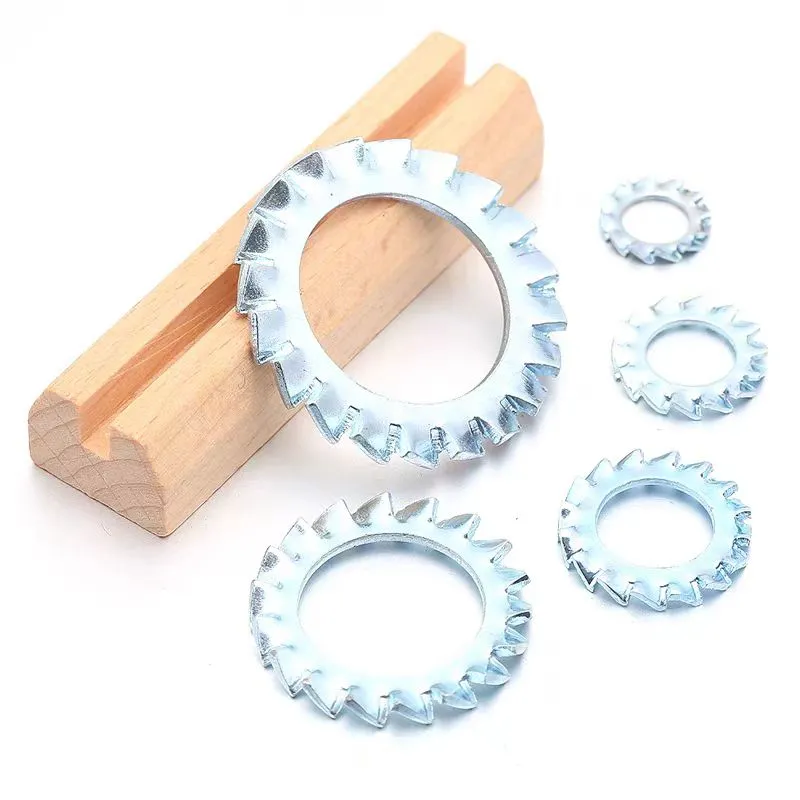

m6 flat washer
ธ.ค. . 06, 2024 20:39 Back to list
m6 flat washer
Understanding M6 Flat Washers An Essential Component in Fastening Systems
Flat washers are a staple in the world of mechanical engineering, manufacturing, and construction. Among the various types, the M6 flat washer holds a significant place due to its specific dimensions and versatility. Whether you're a DIY enthusiast or a professional engineer, familiarizing yourself with M6 flat washers can enhance your understanding of fastening systems and contribute to the longevity and integrity of your projects.
What is an M6 Flat Washer?
An M6 flat washer is designed to accommodate M6-sized screws or bolts, which are commonly used in various applications, including machinery assembly, automotive components, and construction. The M in M6 refers to the metric standard, where 6 denotes the nominal diameter of the bolt's shank in millimeters. The flat washer itself serves several purposes, primarily acting as a spacer and a load distributor.
Typically manufactured from materials such as stainless steel, galvanized steel, brass, or plastic, M6 flat washers come in different thicknesses and surface finishes. The choice of material affects not only the strength and durability of the washer but also its resistance to corrosion and wear, especially in demanding environments.
Functions of M6 Flat Washers
1. Load Distribution One of the primary functions of an M6 flat washer is to distribute the load of the nut or bolt over a larger surface area. By doing so, it minimizes the risk of damage to the surface being fastened. This is particularly crucial when fastening materials that could be prone to deformation under pressure.
2. Preventing Damage Flat washers help protect the surfaces of both the fastener and the material being fastened. They prevent the nuts and bolts from cutting into the material, which can lead to stress points and eventual failure.
3. Vibration Resistance In applications where machinery or components are subject to vibrations, flat washers can help stabilize the fastener. By creating a larger bearing surface, they reduce the likelihood of loosening over time due to movement.
m6 flat washer

4. Corrosion Prevention Using washers made of corrosion-resistant materials can add an extra layer of protection. This is particularly important in outdoor applications or environments where moisture and chemicals are present.
Selecting the Right M6 Flat Washer
Choosing the right M6 flat washer involves considering several factors
- Material Depending on the application, select a washer that aligns with exposure conditions. For instance, stainless steel is ideal for outdoor use, while plastic may be suitable for lightweight applications indoors.
- Thickness The thickness of the washer may affect load distribution and the overall stability of the fastener. Thicker washers may provide additional strength, but they could also increase the overall weight of the assembly.
- Finish Additional coatings, such as zinc plating, can enhance the corrosion resistance of the washer. It's essential to consider this if the washer will be exposed to moisture or harsh chemicals.
- Compatibility Ensure that the washer is compatible with the M6 nut or bolt you are using. This includes verifying the inner diameter of the washer, which should be slightly larger than the bolt diameter to allow for easy installation.
Conclusion
M6 flat washers may seem like simple components, but their role in fastening systems is indispensable. By distributing loads, preventing damage, and enhancing overall stability, these washers contribute significantly to the durability and performance of assemblies. The right choice, based on material, thickness, and finish, can make all the difference in ensuring the effectiveness of your project. Whether you are building furniture, assembling machinery, or undertaking a construction project, understanding and utilizing M6 flat washers effectively can lead to better results and greater satisfaction in your work.
Latest news
-
Premium Fasteners Manufacturer | AI-Driven Solutions
NewsAug.01,2025
-
Hot Dip Galvanized Bolts - Hebei Longze | High Strength, Corrosion Resistance
NewsAug.01,2025
-
High-Strength Hot Dip Galvanized Bolts - LongZe | Corrosion Resistance, Custom Sizes
NewsAug.01,2025
-
Best Self Tapping Screws for Drywall - Fast & Secure Installation
NewsJul.31,2025
-
High-Strength Hot Dip Galvanized Bolts-Hebei Longze|Corrosion Resistance&Customization
NewsJul.31,2025
-
Hot Dip Galvanized Bolts-Hebei Longze Metal Products|Corrosion Resistance&High Strength
NewsJul.31,2025

